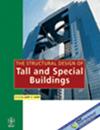研究石柱在极软粘土中的性能——一个案例研究
IF 1.3
3区 工程技术
Q3 CONSTRUCTION & BUILDING TECHNOLOGY
引用次数: 0
摘要
石柱用于改善软土;然而,当土壤非常柔软时,它们会通过膨胀、冲孔和侧向膨胀而失效。本研究通过添加适当的土工合成材料,研究了极软粘土(ESC)中石柱的性能。现场试验的首要目的是获得石柱之间的最佳间距,从而防止石柱在ESC土中破坏。研究进一步探讨了ESC土中石柱的破坏模式。使用计算机编程软件FLAC 3D进行建模和仿真,并使用Auto CAD绘制案例研究所需的几何形状。结果表明:采用合适的土工格栅、合理的间距和合理的垫层设计,充分包裹石柱,可以使石柱作为复合基础在ESC中得到有效的利用。垫层的合适厚度为30 cm,该垫层可以帮助嵌埋软粘土与ESC土壤中安装的包裹石柱协同工作。两个连续石柱之间的中心到中心(最佳)间距在石柱直径S≤5d时表现出最佳性能。研究结果表明,采用合适的土工格栅和合理的间距,可以提高石柱的承载力,减小地基沉降,降低地基的侧向挠度和环向应变。本文章由计算机程序翻译,如有差异,请以英文原文为准。
Investigating the performance of stone columns in an extremely soft clay—A case study
Stone columns are used to improve soft soils; however, they fail through bulging, punching, and lateral expansion when the soil is extremely soft. The present study investigated the performance of stone columns in an extremely soft clay (ESC) through the addition of the appropriate geosynthetic materials. Field test was conducted for the foremost purpose of obtaining the optimal spacing between the consecutive stone columns and therefore prevents the failures of stone columns in ESC soils. The study further examined the failure modes of stone columns for the case of ESC soils. The computer programming software FLAC 3D was used for modeling and simulation, while Auto CAD was used to draw needed geometries of the case study. The results revealed that the full encasement of the stone column with suitable geogrids, optimal spacing, and proper design of cushion will enable the efficient use of stone columns as a composite foundation in ESC. The considered appropriate thickness of the cushion was found to be 30 cm, and this cushion helps the embedded soft clay soils to work together with the installed encased stone columns in ESC soils. The center‐to‐center (optimal) spacing between two consecutive stone columns showed optimal performance at distance S ≤ 5d of the diameter of the stone column. These findings show that stone column encased with suitable geogrids and optimal spacing will improve the bearing capacity, reduce settlement, and decrease the lateral deflection as well as hoop strain of the foundation.
求助全文
通过发布文献求助,成功后即可免费获取论文全文。
去求助
来源期刊
CiteScore
5.30
自引率
4.20%
发文量
83
审稿时长
6-12 weeks
期刊介绍:
The Structural Design of Tall and Special Buildings provides structural engineers and contractors with a detailed written presentation of innovative structural engineering and construction practices for tall and special buildings. It also presents applied research on new materials or analysis methods that can directly benefit structural engineers involved in the design of tall and special buildings. The editor''s policy is to maintain a reasonable balance between papers from design engineers and from research workers so that the Journal will be useful to both groups. The problems in this field and their solutions are international in character and require a knowledge of several traditional disciplines and the Journal will reflect this.
The main subject of the Journal is the structural design and construction of tall and special buildings. The basic definition of a tall building, in the context of the Journal audience, is a structure that is equal to or greater than 50 meters (165 feet) in height, or 14 stories or greater. A special building is one with unique architectural or structural characteristics.
However, manuscripts dealing with chimneys, water towers, silos, cooling towers, and pools will generally not be considered for review. The journal will present papers on new innovative structural systems, materials and methods of analysis.

 求助内容:
求助内容: 应助结果提醒方式:
应助结果提醒方式:


